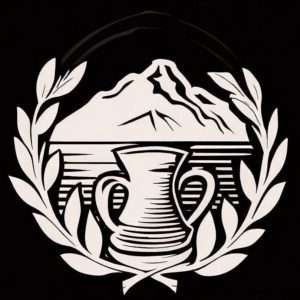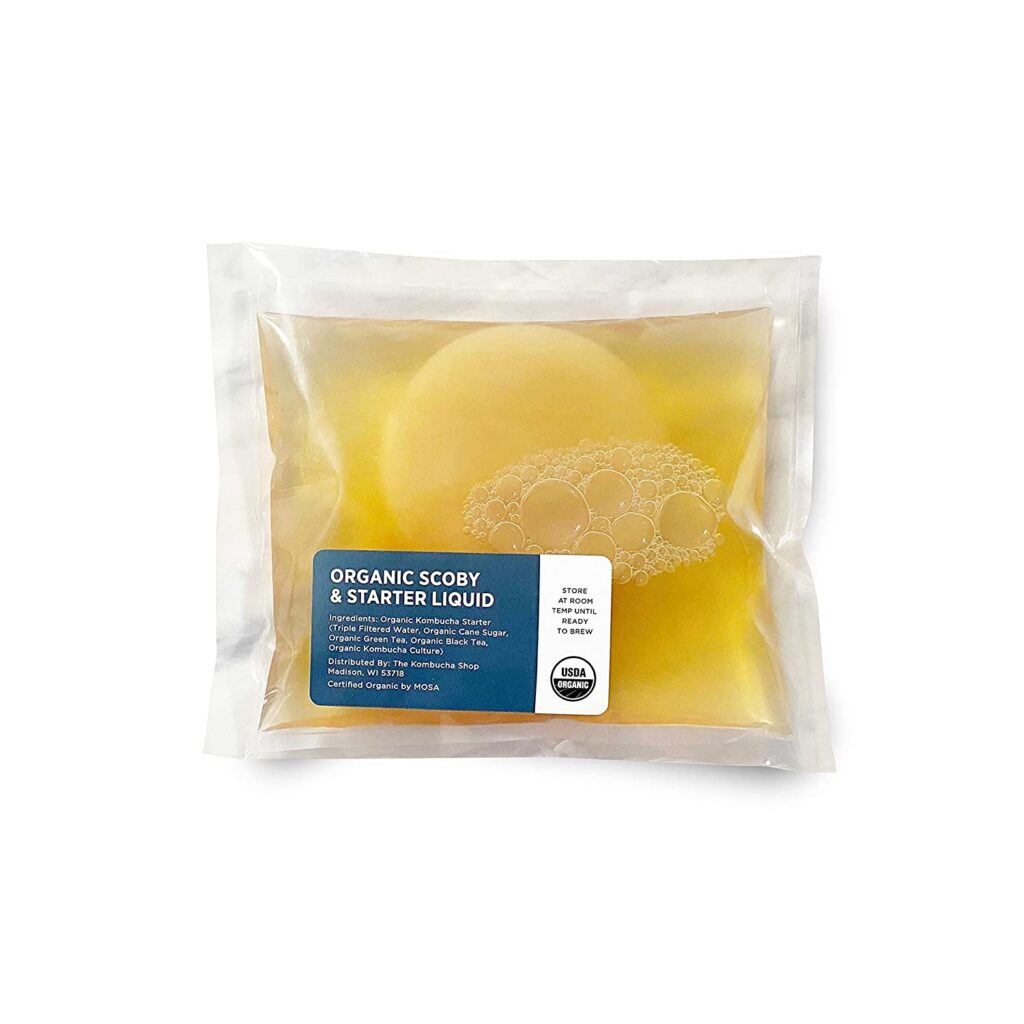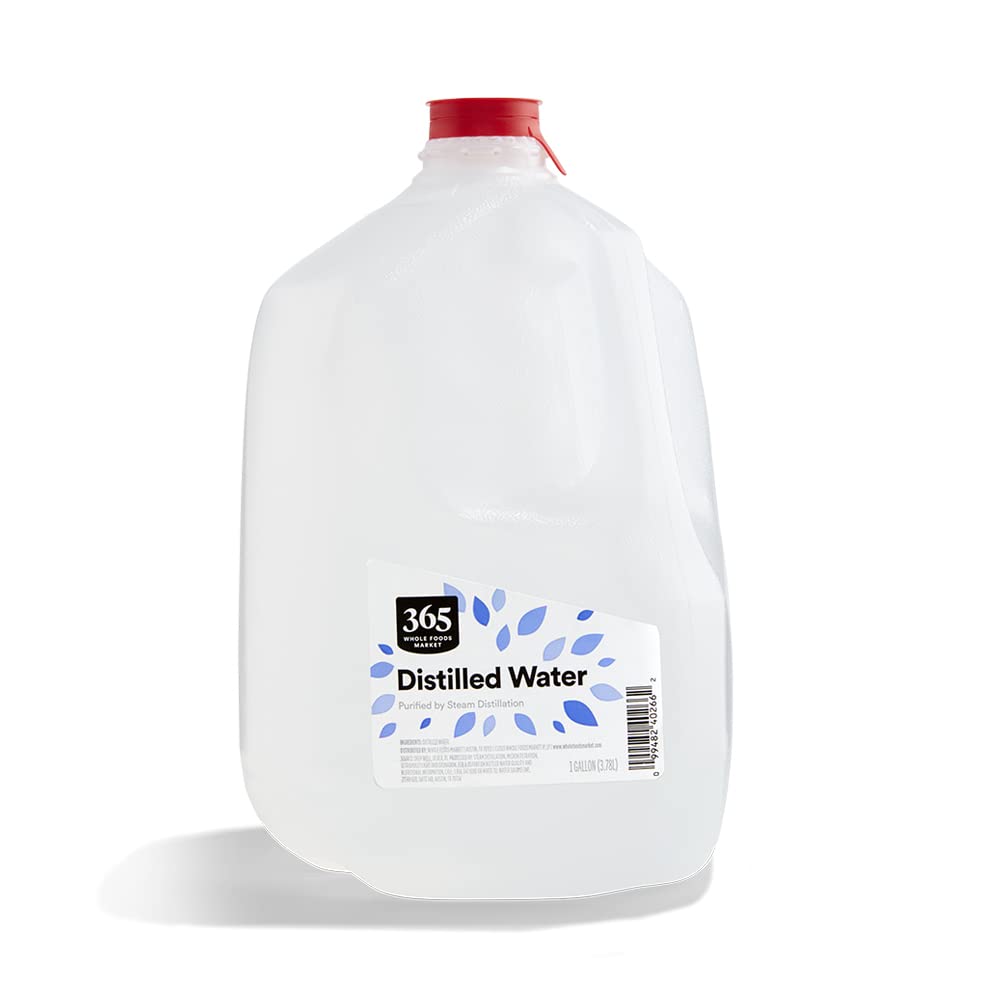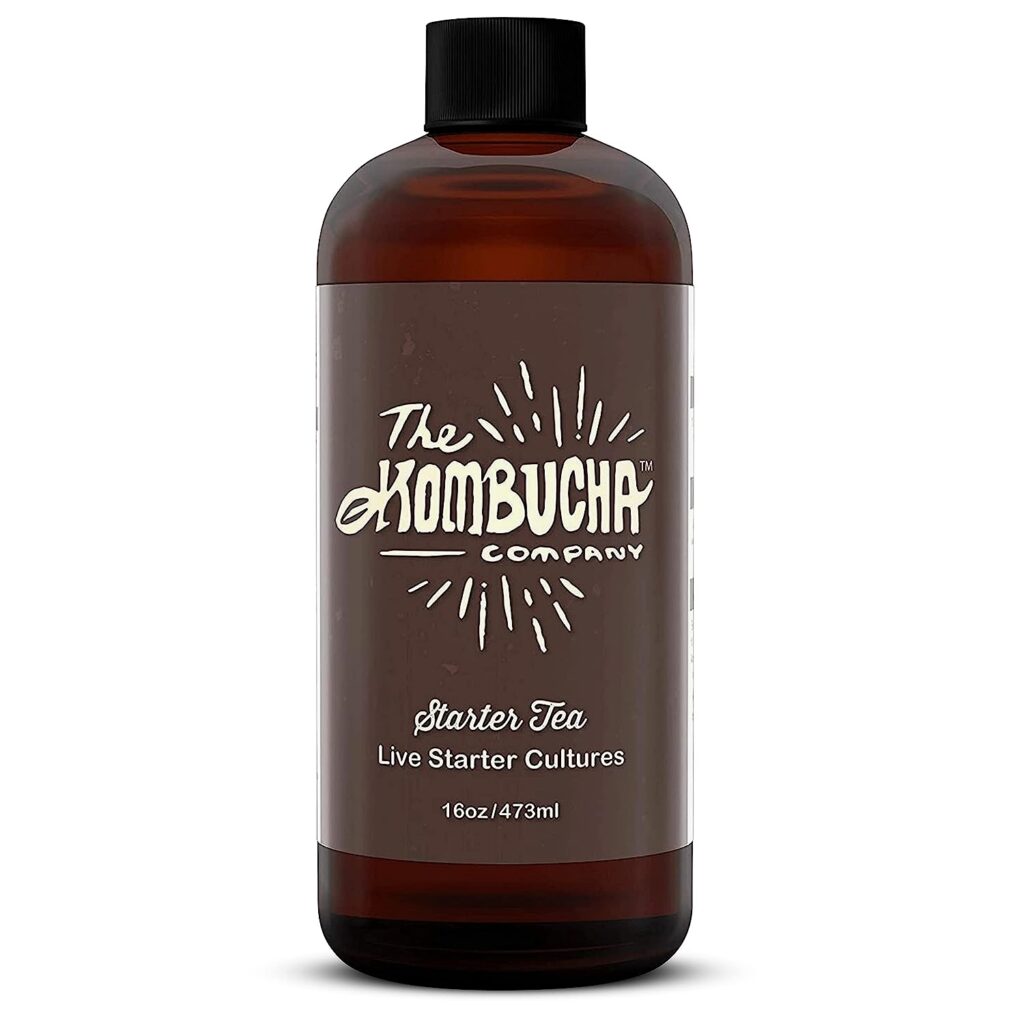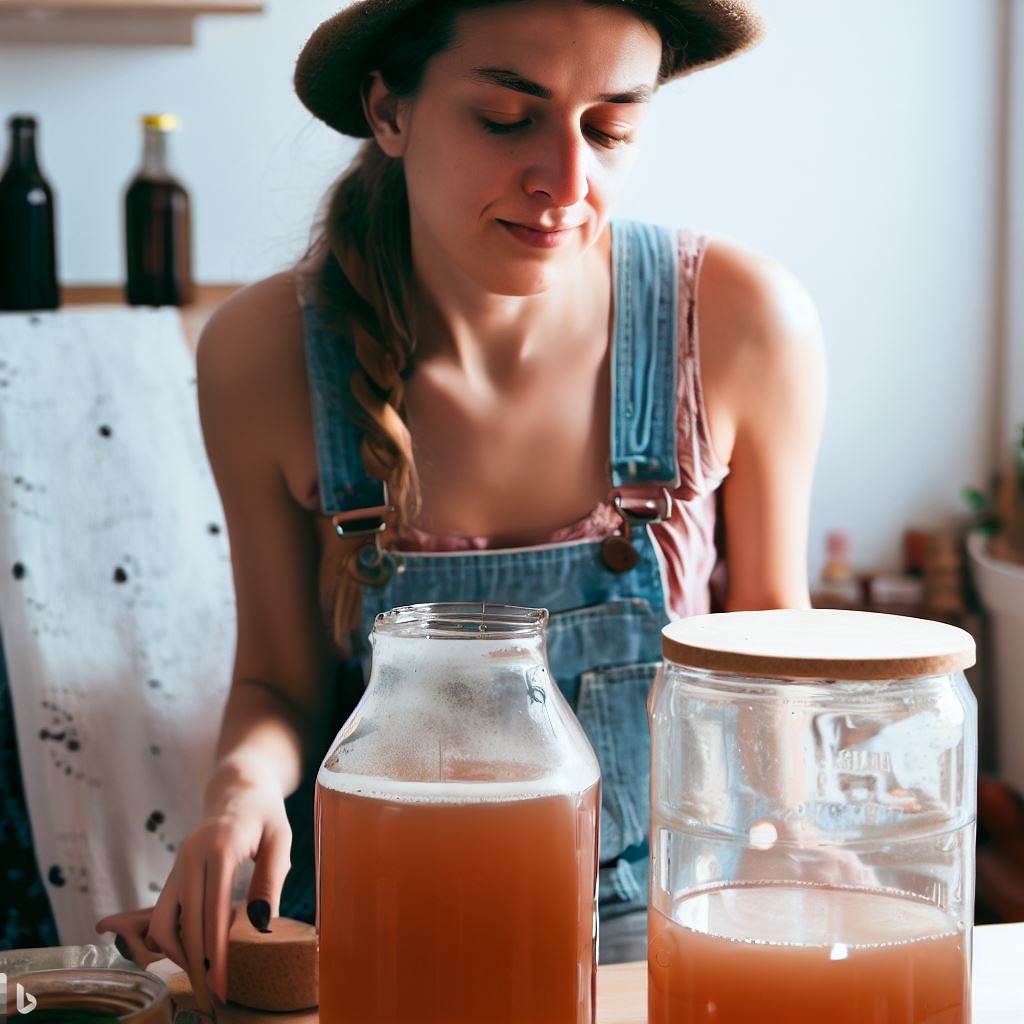Looking to get a into brewing and need a Kombucha QuickStart Guide? Welcome to the ultimate guide on mastering the art of brewing kombucha! At Greek Mountain Kombucha, we are dedicated to providing you with comprehensive information and expert advice to help you become a kombucha brewing pro. Whether you’re a beginner or have some experience, this guide will equip you with the knowledge and skills needed to create delicious and healthy kombucha at home. Let’s dive right in! Here is what You’ll need to rock & roll: Also, you can click on any of the links or pictures to buy our top reccomended products for brewing Kombcuha!
1. 1 SCOBY (Symbiotic Culture Of Bacteria and Yeast)
2. 1 Cup of Organic Cane Sugar (per gallon)
3. 8 bags of Organic Tea (Black or Green Teas)
4. 1 Gallon of Distilled or Filtered Water
5. 2 cups of Starter Kombucha (Unflavored, store-bought kombucha works)
6. A 1-Gallon Glass Jar
7. A Piece of Cloth or Coffee Filter
Optional to Read Up!: Kombucha Book on Craft Brewing! – The Big Book of Kombucha
Quick Review on the Big Book of Kombucha by Hannah Crum and Alex LaGory
The Big Book of Kombucha” is an indispensable resource for anyone interested in brewing their own kombucha at home. With its comprehensive information, detailed instructions, and inspiring flavor ideas, it caters to both beginners and experienced brewers alike. The authors’ passion and expertise shine through in every page, making it an engaging and informative read.
Pros:
- Comprehensive and detailed instructions for kombucha brewing.
- Over 400 flavor combinations to experiment with.
- Troubleshooting tips to overcome brewing challenges.
- Insights into the health benefits of kombucha.
- Beautifully illustrated and well-organized.
Cons:
- The book may be overwhelming for absolute beginners due to the extensive information provided.
- Some readers may have preferred more emphasis on specific flavor profiles or advanced techniques.
The Big Book of Kombucha” is a must-have for kombucha enthusiasts and those curious about fermenting their own tea. It offers a wealth of knowledge, practical advice, and inspiration to embark on a flavorful and healthful kombucha journey. Whether you’re a novice or an experienced brewer, this book will guide you towards creating delicious and unique kombucha creations.
Steps in the Process: Kombucha Quickstart Guide
1. Brew the Tea:
Boil a gallon of water (not tap!) in a large pot. Once boiling, remove from heat and add your tea bags and sugar, stirring until the sugar dissolves. Allow the tea to cool completely.

2. Add the SCOBY:
Once the tea is cool, remove the tea bags and pour the mixture into your clean glass jar. Add the starter kombucha. This helps acidify the brew and prevent unwanted bacteria from forming. Then, gently add your SCOBY to the jar.

3. Cover and Wait (the hardest part):
Cover the jar with your cloth or coffee filter and secure it with a rubber band. This allows the brew to breathe while keeping out insects and debris. Store the jar in a warm, dark place (around 70-85°F or 21-29°C is ideal) where it won’t be disturbed.

4. First Fermentation:
Let the kombucha ferment for 7-10 days. Preferably allow it to ferment in a place with good airflow. During this time, the SCOBY will consume the sugar in the tea, creating a tangy, fizzy beverage.

5. Taste Test the Kombucha:

After 7 days, taste the kombucha. If it’s too sweet, let it ferment for a few more days. If it’s to your liking, you can move on to the next step of our Kombucha Quickstart Guide.
Optional Second Fermentation for Flavor and Fizz!
What is second fermentation?
Second fermentation, also known as bottle conditioning, is an additional fermentation process that takes place after the initial brewing of kombucha. It involves transferring the fermented tea into bottles, adding flavorings or ingredients, and allowing it to ferment further to enhance carbonation and develop complex flavors.
Importance of second fermentation
Second fermentation is a crucial step in the kombucha brewing process as it allows for the customization of flavors and the development of carbonation. It elevates the taste and effervescence of the final product, transforming a simple kombucha brew into a delightful, fizzy beverage.
The role of yeast and bacteria
During second fermentation, the yeast and bacteria present in the kombucha culture continue to metabolize the residual sugars, producing carbon dioxide as a byproduct. This carbon dioxide gets trapped in the bottle, creating natural carbonation. The bacteria also work to further refine the flavor and reduce the acidity of the kombucha.
6. Second Fermentation (Optional, but Wonderful):

This Second Fermentation step is for if you want to add flavors (fruits, herbs, juices) and extra fizz to your kombucha. Remove the SCOBY and set it aside for your next batch. Pour the kombucha into bottles, leaving some room at the top (enough for a cup of so of flavorings). Add any flavorings you like (100% juices, fruit, ginger, herbs, etc.), then seal the bottles. If you want extra fizz add some cane sugar as well. Just a couple tablespoons work. Leave them at room temperature for 2-3 days for a second fermentation, then refrigerate.
Troubleshooting and Tips
Common Issues and Solutions
Read our Troubleshooting Guide for more detail on this topic! Or continue reading on our Kombucha Quickstart Guide.
- Mold: If you notice mold growth on the surface of your kombucha, discard the entire batch, including the SCOBY, and thoroughly clean all equipment before starting over.
- Vinegar-like Smell: An overly acidic smell indicates over-fermentation. Start a new batch, reducing the fermentation time to achieve a milder flavor.
- Weak Flavor: If your kombucha lacks flavor, you can extend the fermentation time to enhance its tanginess.
- Slow Fermentation: In cooler temperatures, fermentation may take longer. Find a warmer spot or use a heating mat to speed up the process.
Tips for Optimal Brewing
- Maintain good hygiene: Clean all equipment thoroughly before each batch to prevent contamination.
- Use quality Organic Ingredients: Opt for organic tea and sugar to provide the best nutrients for the SCOBY.
- Experiment with flavors: After primary fermentation, you can add various fruits, herbs, or spices to create unique and delicious flavor profiles.
- Keep a brewing journal: Note down your brewing process, observations, and modifications for future reference and improvement.
7. Enjoy! #Smiling

Exploring Kombucha Flavor Variations
Fruit Infusions
One of the joys of brewing kombucha is the ability to experiment with different fruit infusions. Here are some popular fruit recipes to try. Dive into our Recipe Guide for more info on Brilliant Kombucha Recipes.
- Raspberry Blast: Add a handful of fresh or frozen raspberries to your secondary fermentation. The result is a vibrant and tangy raspberry kombucha.
- Tropical Paradise: Slice some juicy pineapple and combine it with shredded coconut for a tropical twist. This infusion will transport you to a sunny beach.
- Citrus Zing: Squeeze the juice of fresh lemons, oranges, or a combination of both. The citrusy notes add a refreshing and tangy kick to your kombucha.
- Mixed Berry Medley: Create a delightful blend of blueberries, strawberries, and blackberries for a burst of sweet and tart flavors.
Herbal and Floral Infusions
If you prefer a more herbal or floral taste, consider these infusion ideas:
- Lavender Delight: Add dried lavender flowers to your secondary fermentation for a calming and fragrant kombucha.
- Minty Fresh: Crush fresh mint leaves and infuse them into your kombucha for a cool and invigorating flavor.
- Hibiscus Blossom: Steep dried hibiscus flowers in hot water and add the infusion to your kombucha. The result is a vibrant red beverage with a tangy and floral taste.
Spice Infusions
Spices can add warmth and depth to your kombucha. Here are a few spice infusion suggestions:
- Ginger Spice: Grate fresh ginger root and add it to your secondary fermentation. The ginger will infuse your kombucha with a pleasant heat and subtle spiciness.
- Cinnamon Twist: Place a cinnamon stick in your jar during primary fermentation or add ground cinnamon to your secondary fermentation for a cozy and aromatic kombucha.
- Cardamom Elixir: Crush cardamom pods and add them to your kombucha during secondary fermentation. The result is a unique and exotic flavor profile.
Final Thoughts
Chill your kombucha in the fridge before serving. Enjoy your homemade, refreshing, and healthy kombucha! Remember, always keep everything clean to prevent mold and unwanted bacteria. You now have a wealth of knowledge and techniques to master the art of brewing and flavoring kombucha. By following the steps outlined in this guide and experimenting with different flavors, you can create a range of delicious and unique kombucha variations. Remember to have fun, trust your taste buds, and continue exploring the wonderful world of kombucha brewing. We hope you enjoyed this Kombucha Quickstart Guide. Happy brewing ya’ll!
Click For: Youtube Video Link for a deeper dive on this Quickstart Brewing Guide
Interested in More? Check our these blog posts here at Greek Mountain Kombucha:
